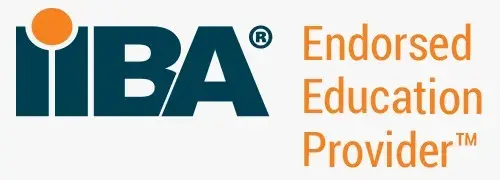What Is Requirements Analysis and Modelling?
In any organization, a business need is a first and foremost task as on the basis of a business need, the organization creates a new product or service. Now, the development process of any product or service is a time-consuming process, and it can still lead to a wide difference in the outcome for the required product and the actual final product. And this is where the requirement analysis and modelling play a crucial role in avoiding major problems that could arise in the future and determining the success of the project. In this guide, let us learn more about requirements analysis and modelling.
Are you an entry-level business analysis professional? Start your business analysis career and validate your skills with ECBA certification exam.
What is Requirements Analysis?
Requirements analysis and modelling is probably the most important skill for a business analyst. The success of any software project depends on this task.
Requirements analysis and modelling involve multiple tasks:
- Understanding business requirements
- Decomposition and analysis of requirements
- Categorization of requirements
- Modelling of requirements
The basic objective is to make sure that you understand the requirements from the customer perspective, translate them into requirements, that the software development team can understand. Requirements understanding has been one of the key factors for software projects’ poor records.
Requirements Analysis Process
The process of requirement analysis includes the following steps:
Identifying Key Stakeholders and End-Users
The first step of the requirement analysis process is identifying the key stakeholder who has the major say in the project and who are the sponsors of the project. These stakeholders make all the important decisions related to the project and have the final say.
Then you have to identify the end-users, the users for whom the project is intended as their inputs and feedback will majorly impact the project’s success.
You can also read our blog related to How to handle challenging stakeholders? and When Stakeholders Can’t Express the Requirements Well?
Capturing Requirements
The next step is capturing the requirements of the project from the stakeholders and end-users.
Here are some ways you can use to capture the requirements:
- One-on-One interviews with end-users and stakeholders to get an idea about their individual requirements.
- Conduct group interviews to understand the requirements of stakeholders and end-users as a group and to avoid conflict of interest at later stages.
- Utilizing use cases to get a walkthrough of the product through the eyes of the end-users.
- Building prototypes to provide a sample of the final product to the end-users and stakeholders.
Categorizing Requirements
The requirements are of various types and it is wise to categorize them accordingly to avoid any confusion.
There are four categories where you can divide the requirements:
- Functional requirements
- Technical requirements
- Transitional requirements
- Operational requirements
Interpreting and Recording Requirements
After you categorize the requirements, the next step is interpreting and recording those requirements which are achievable.
Here are some ways of analyzing and interpreting the requirements:
- Defining Requirements Precisely – Make sure that the requirements are laid down properly, sufficiently detailed, and in accordance with the business needs.
- Prioritizing the Requirements – You can make a list of requirements ranging from the Most important.
- Carry Out an Impact Analysis – To understand the consequences of the requirements, you can initiate an impact analysis to predict the consequences.
- Resolve Conflicts – You can arrange a meeting with your stakeholders to take care of conflicting requirements.
Sign Off
The last step is getting signatures from your key stakeholders on the final decisions that you have made on the project requirements.
Requirements Analysis and Modelling Techniques
Several Requirements Analysis and Modelling (RAM) techniques are practiced to conduct this activity.
Some of these techniques are as follows:
Business Process Modeling Notation (BPMN)
BPMN is a graphical technique of representing your business process using various graphs. It helps in simplifying the representation of the business process so that it is easy to understand. It includes the following:
- State
- Object
- Activity
- Class diagram
Now, you can come across 14 UML diagrams that are primarily used for modelling. A few of these are use case diagrams, class diagrams, interaction diagrams, sequence diagrams, and so on.
Gantt Charts
Gantt charts are used for representing the project tasks along with their timelines. It helps business analysts in keeping a track of the timeline for all the project tasks.
Data Flow Diagrams
A data flow diagram is an important technique, which is used for highlighting how data processing is done by a system with regard to inputs and outputs. A data flow diagram includes the following components.
- Process
- Flow
- Store
- Terminator
To define the scope of the project, a DFD can be designed in the early requirement elicitation process of the analysis phase in the system development life cycle.
Gap Analysis
Gap analysis as the name suggests helps in analyzing the gaps within the project requirements. It helps business analysts in determining the present state and the target state for a product.
As a business analyst, you should learn at least a couple of techniques and when to use them. It will help you in having a better perspective and use of the correct techniques in a given context.
In this video below, I have explained some really basic concepts and a completely custom technique for requirements analysis and modelling. You don’t need to have any prior knowledge to understand it.
Also, you can read What Are Requirement Prioritization Techniques?
Requirement Analysis Tools
Some of the most commonly used tools for requirement analysis and modelling are as follows:
Conclusion
Analyzing the requirements through requirement analysis and modelling is extremely crucial for any organization to derive successful results for the project. There is a growing demand for business analysts, who will be responsible for aligning the project requirements with the business needs and objectives.
Techcanvass offers business analyst courses to help you develop your skills and knowledge of requirement analysis and modelling. If you have a keen interest in analyzing the requirements of a project, then you can explore and enroll yourself in our BA courses.
What’s in The Video
In this video, I have explained the basics of Requirements analysis & modeling. Some of the important topics covered in this webinar are as follows:
1. What are C & D Requirements?
2. What & Why of Modeling?
3. What is Process Modeling?
4. Techniques of Process Modeling



